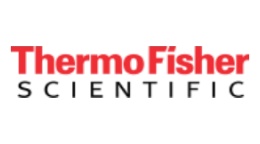方案详情文
智能文字提取功能测试中
2 Introduction Peptide mapping is frequently used to study the primarystructure of proteins, to characterize post-translationalmodifications or to confirm genetic stability, especiallywhen interfaced with mass spectrometry. UV detectionis still the preferred technique for peptide mappingespecially in stability studies and quality controlenvironments due to its inherent robustness and easeof use. The reversed-phase based separations combinedwith UV are especially challenging since a high numberof peptides need to be baseline resolved. Chromatographicruns consist typically of long shallow gradients withrun times in the range of 30 to 120 minutes. With suchapplications, the identification of peptides in the sampleof interest is based on a comparison of retention timesto a reference sample. As peak assignment is based on retention times,highly reproducible chromatographic runs over anextended time frame are essential for confident datainterpretation. When evaluating these aspects together,it highlights the importance of highly reliable andreproducible peptide mapping over extended timeperiods. This challenges the column robustness and theUHPLC instrumentation, including the consistency offlow delivery and column thermostatting. The Thermo ScientificVanquishUHPLC system isuniquely positioned to meet these analytical requirementsdue to advancements in system design such as the newparallel pump design which delivers a highly stable flowwith extremely low pulsation. Additionally, the Vanquishautosampler compresses the sample before injecting it.This feature contributes to improve the flow consistencyof the Vanquish pump resulting in ultra high retentiontime precision.Since the pre-compression protects theanalytical column from any pressure drop during theinjection, the column lifetime is extended. The injection-to-injection reproducibility was evaluatedpreviously.1 This study investigates the reproducibilityof peptide mapping over a period of 4 days. Theretention time and peak area precision are reportedas reproducibility indicators. In addition, the peakcapacity is given to evaluate the separation quality. -Mixer Kit, 200 pL, VH-P1 (6268.5120) -Split Sampler HT (P/N VH-A10-A)- Column Compartment H (P/N VH-C10-A)-Active pre-heater (6732.0110)-Diode Array Detector HL (P/NVH-D10-A) -LightPipe flow cell, standard (10 mm; P/N 6083.0100) Thermo ScientificDionexChromeleonTM Chromatogaphy Data System (CDS) software 7.2 Figure 1. Ten randomly chosen chromatograms for the peptide mapping of a tryptic BSA digest. In total86 injections were performed covering a time frame of 80 hours without any user interference. Figure 2. Trend plot of retention times of peptides A-F in 10 randomly chosen chromatograms coveringa time period of more than 80 hours. Table 1.Retention time and peak area precision of six selected peaks eluting over the entire gradient and spanning a wideconcentration range. Chromatograms used for the calculation span a time period of more than 80 hours. PeakID Retention Time (min) Retention Time SD (min) Retention Average Area(mAU*min) Peak Area SD(mAU * min) RSD Area (%) Tfime RSD (%) A 3.289 0.005 0.16 O.147 0.003 2.34 B 7.937 0.008 0.10 0.375 0.004 1.13 C 12.673 0.010 0.08 0.532 0.003 0.54 D 17.535 0.014 0.08 1.490 0.005 0.34 E 20.945 0.015 0.07 0.442 0.004 0.87 F 25.328 0.016 0.06 1.412 0.007 0.48 Conditions Column: Thermo Scientific Acclaim" RSLC 120, C18, 2.2 pm Analytical (2.1×250 mm), P/N 074812 Mobile Phase: A: 0.05% TFA in water, P/N TFA 85183 B: 0.04% TFA in 8/2 acetonitrile/water (v/v), Gradient: P/N acetonitrile TS-51101 0-30 min: 4-55% B, 30-31 min: 55-100%B, 31-35 min: 100% B, 35-36 min: 100-4% B, 36-56 min: 4% B Flow Rate: 0.3 mL/min Temperature: 50 °℃; Still Air Mode Injection Volume: 2pL Detection: 214nm Data Collection Rate: 10 Hz Response Time 0.4 s Flow Cell: 10 mm LightPipe Results and Discussion For this study we repeatedly injected a tryptic digest ofbovine serum albumin (BSA) or a solvent blank over atime period of more than 80 hours. The separation wasachieved using a 250 mm long Acclaim RSLC C18column. The optional 200 pL mixer setup was installedon the Vanquish pump.2 In Figure 1, ten randomlychosen samples, representing the entire time frame ofthe experiment, are shown. Visual inspection of thesechromatograms clearly demonstrates that the separationis highly reproducible during the entire sample sequenceof 86 injections. Figure 2 gives the retention time trendplot for six peptides eluting over the entire gradient.No shift in retention time can be observed for any of thepeptides. Table 1 gives the quantitative data on retentiontime and peak area as relative standard deviation. Therelative standard deviation of the retention time was inthe range of 0.16% (standard deviation of 0.005 min)for the least retained peptide and 0.06% (standarddeviation of 0.016 min) for substance F representing alate eluting peptide. To evaluate the separation quality, the peak capacitywas calculated for all chromatograms recorded duringthe experiment. The peak capacity was calculatedaccording to: with tw being the gradient time (30 min) and w1/2 repre-senting the peak width at half height. The calculation wasbased on the peak width of six well resolved peptides. Thepeak capacities for the selected chromatograms are shownin Figure 3. The peak capacity in the beginning of the sample list wasat a remarkable value of 392 highlighting the separationpower of the Vanquish system in combination with theAcclaim RSLC column. During the course of that 80hours experiment the peak capacity did not significantlydecreased. For injection number 86 the peak capacity wasstill at 390. Conclusion Stability of retention times and peak areas are crucialfor the evaluation of peptide mapping experimentsespecially in LC-UV type experiments e.g. in processcontrol or stability studies. In this study we demonstratedthat the Vanquish UHPLC system provided extraordinarystability of retention time, peak area and peak capacityof a very large sample set of 86 injections over morethan 80 hours. This stability will enable the analysts toconfidently attribute a change in retention time or peakarea to a real peptide modification and avoids anymisinterpretation of the data. Figure 3. Peak capacity of 10 randomly chosen chromatograms during the peptidemapping of a tryptic BSA digest. References ( 1.Thermo Scientific Application Note 1124: Providing the H ighest R etention Time and Peak Area Re p roducibilityfor Maximal Confidence in P eptide MappingExperiments, 2015. ) ( 2. Thermo Scientific Technical Note 108: Reliable Solvent Mixing in UHPLC, 2011.. ) SCIENTIFIC AThermo Fisher Scientific BrandANEN
关闭-
1/3
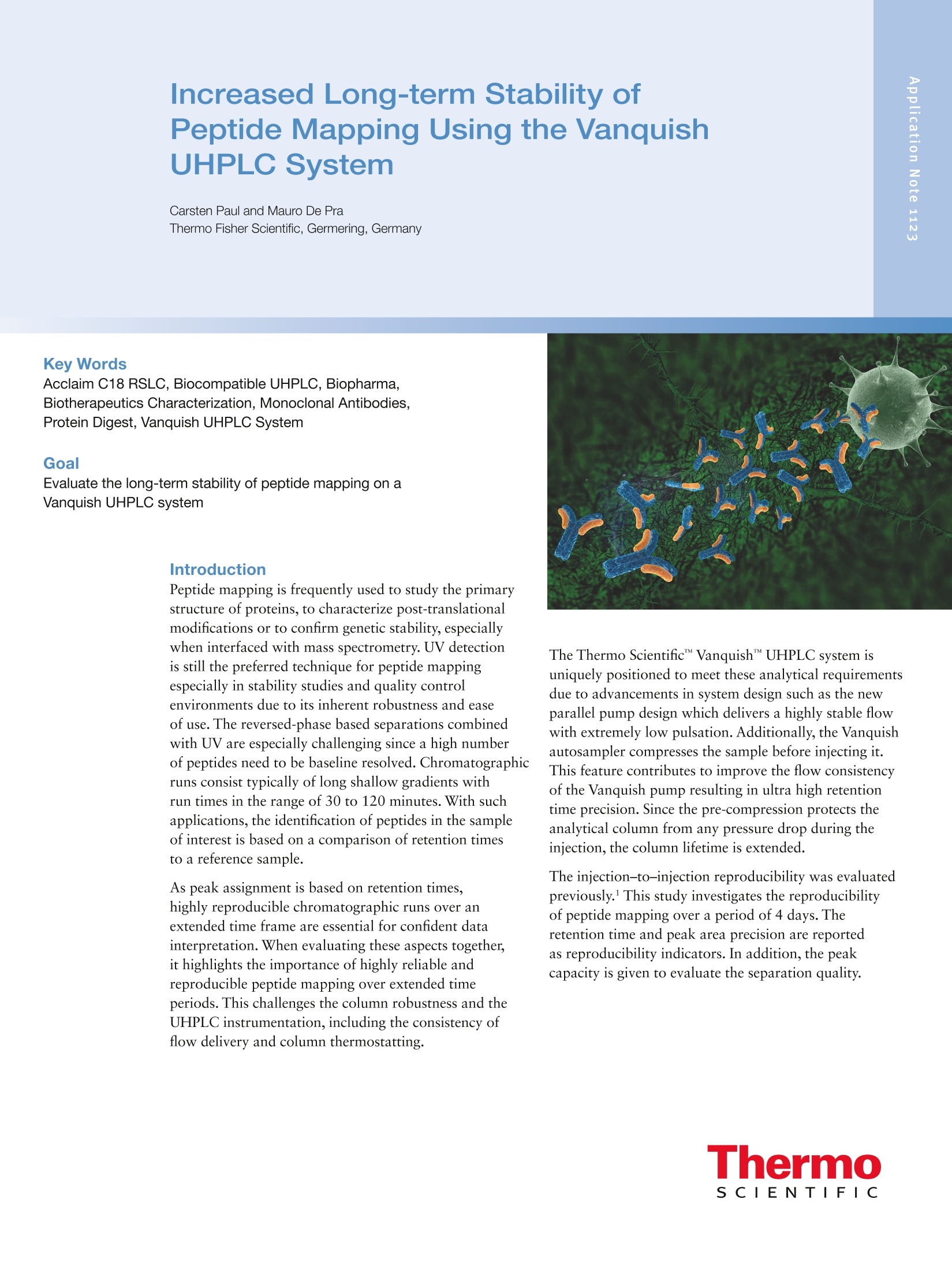
-
2/3
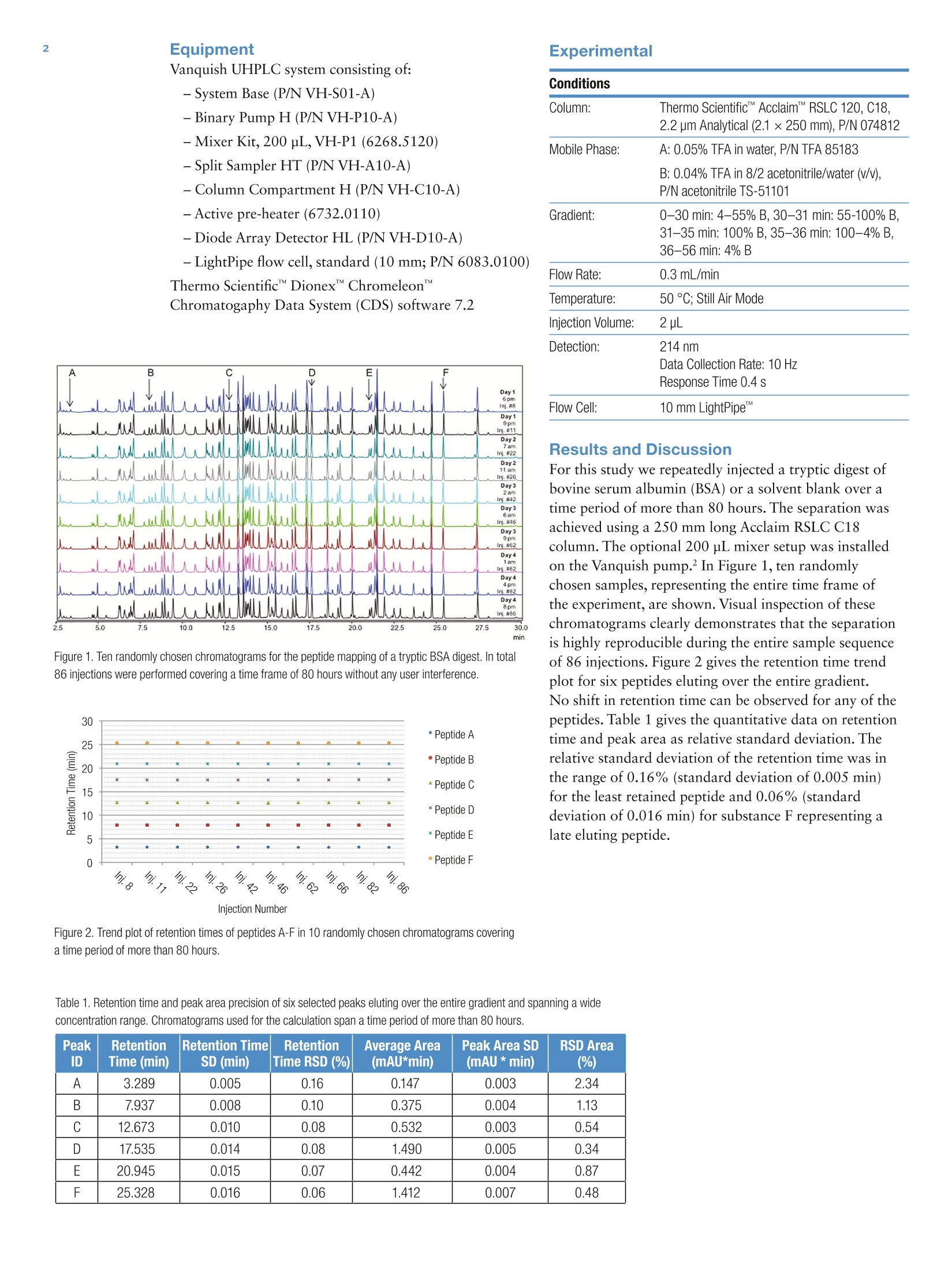
还剩1页未读,是否继续阅读?
继续免费阅读全文产品配置单
赛默飞色谱与质谱为您提供《化学药中肽谱分析的长期稳定性检测方案 》,该方案主要用于化药新药研发中组学研究检测,参考标准《暂无》,《化学药中肽谱分析的长期稳定性检测方案 》用到的仪器有赛默飞 Vanquish™ UHPLC超高效液相色谱系统。
我要纠错
推荐专场
相关方案
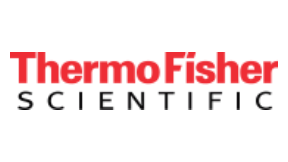

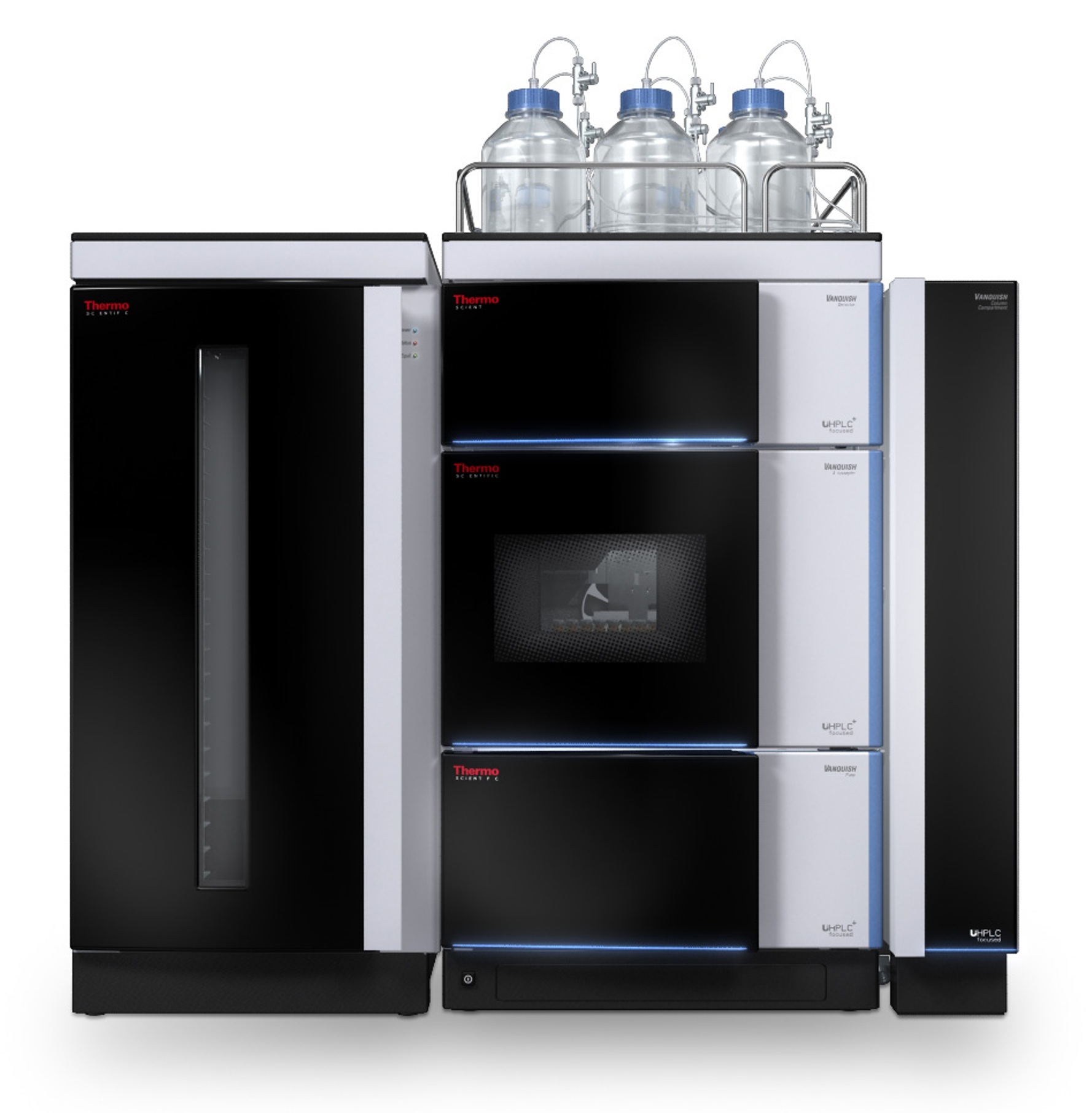
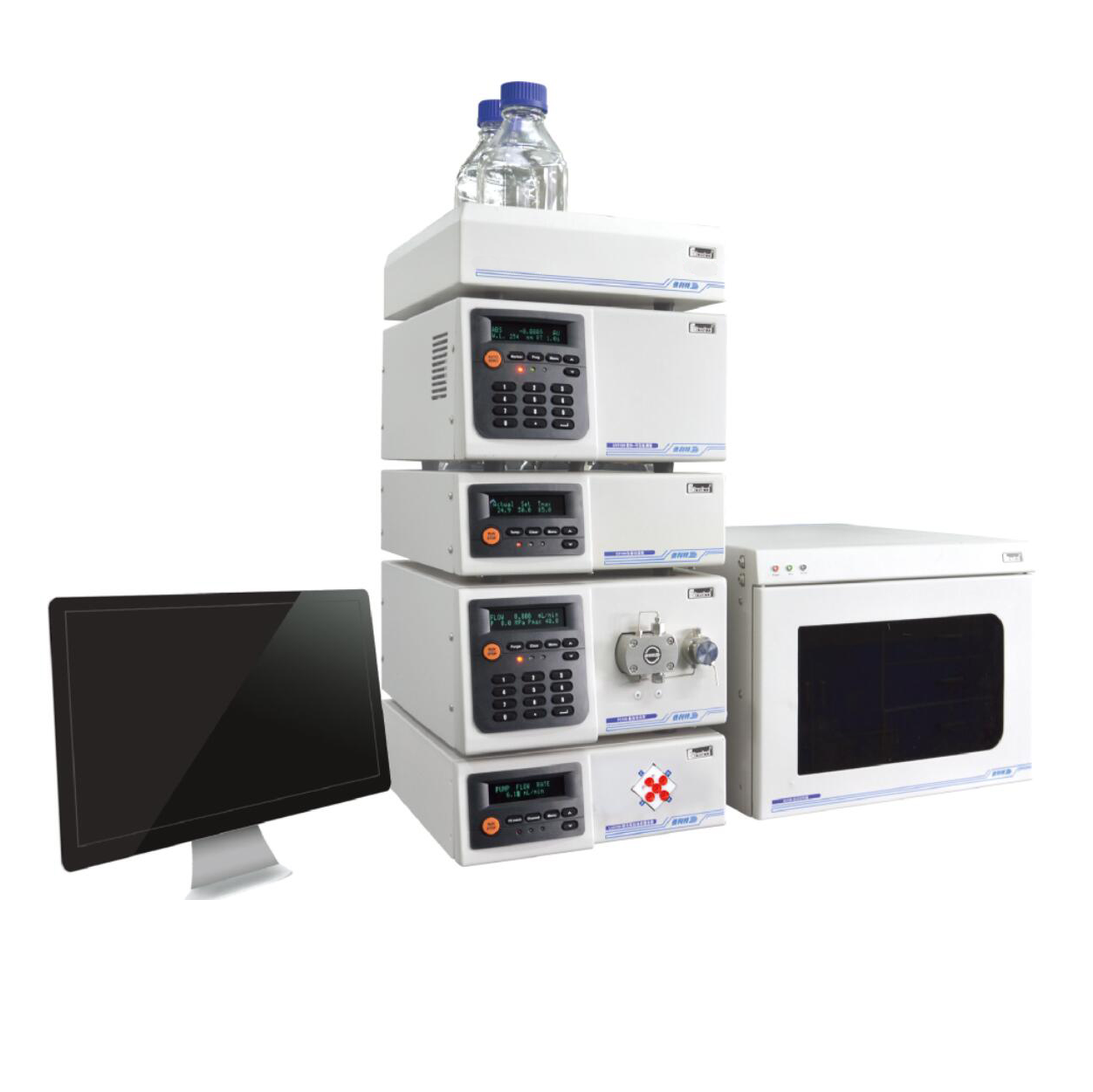
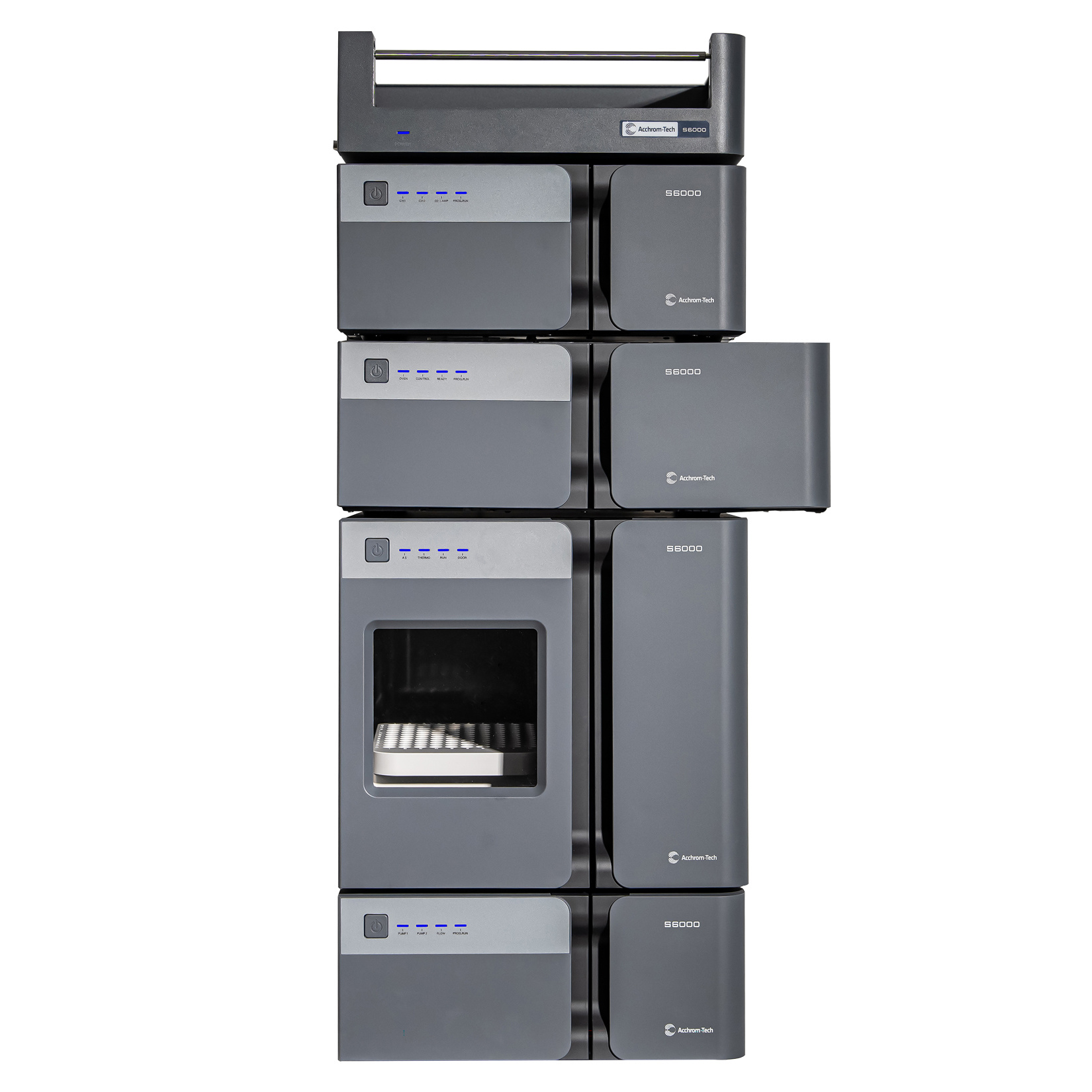
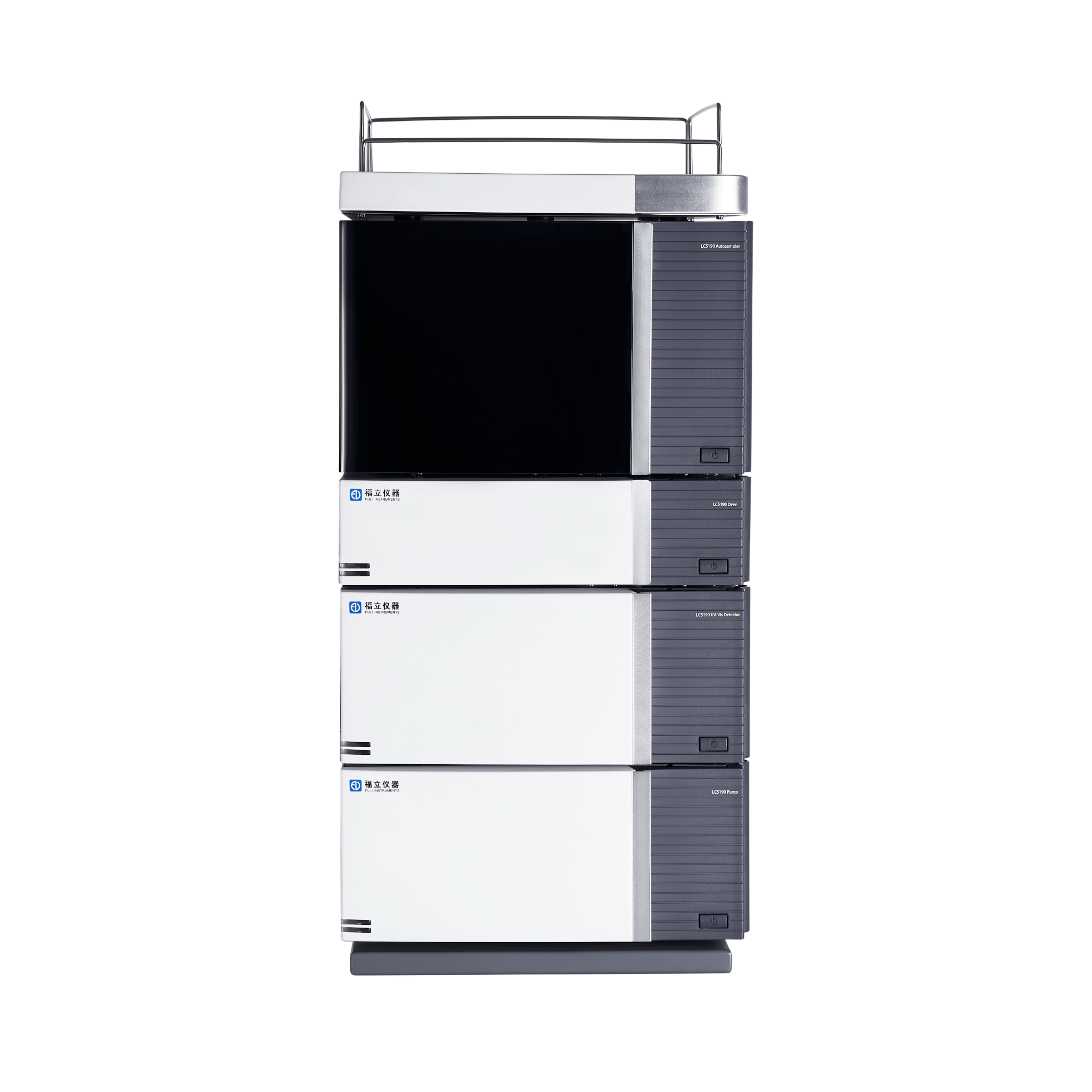
 咨询
咨询